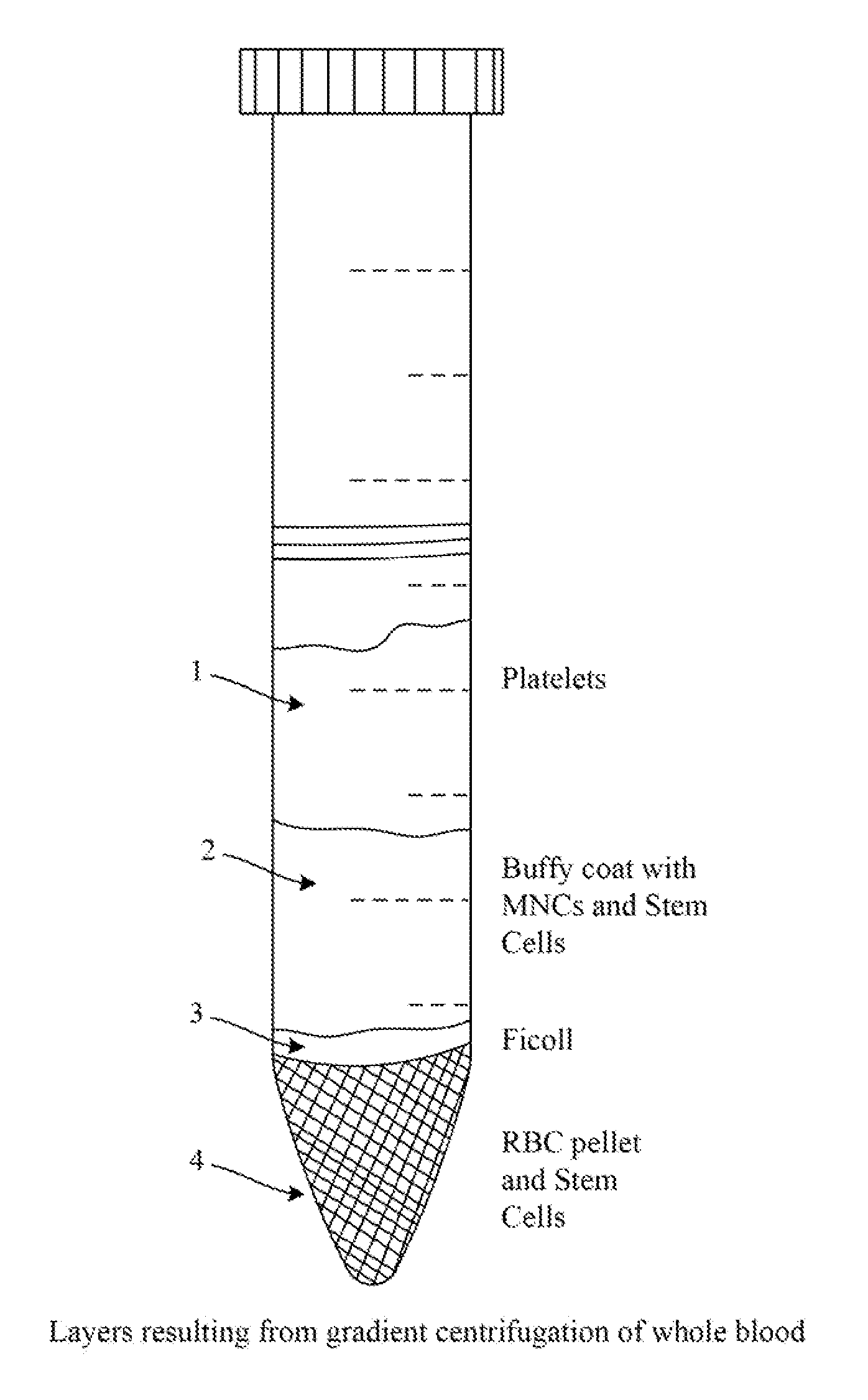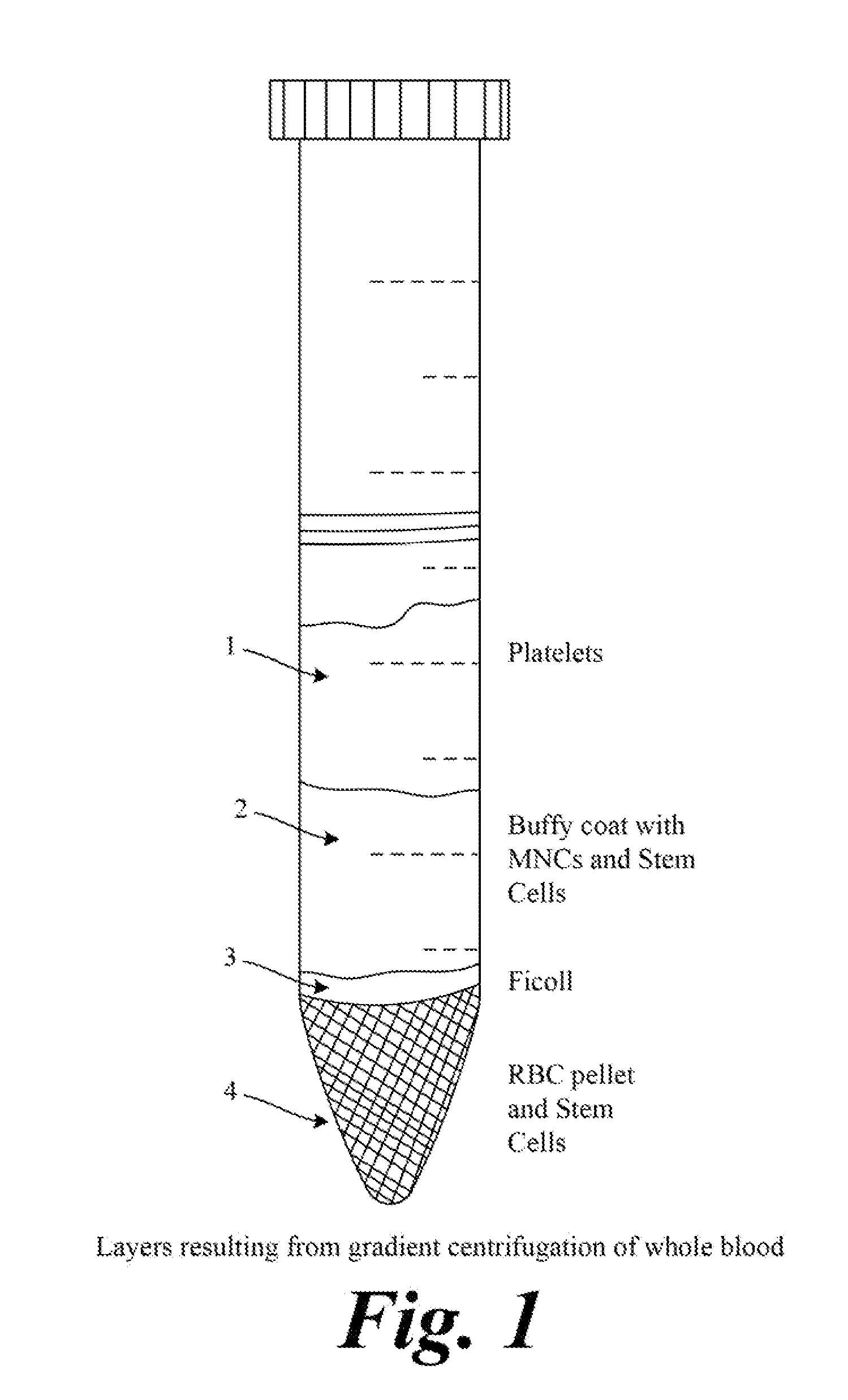Personalized production of biologics and method for reprogramming somatic cells
a technology of biologics and somatic cells, applied in the field of recombinant polypeptides and proteins, can solve the problems of patient without treatment options, patient may be left without treatment options, patient is not responsive or unresponsive,
- Summary
- Abstract
- Description
- Claims
- Application Information
AI Technical Summary
Benefits of technology
Problems solved by technology
Method used
Image
Examples
example 1
Genetic Modification of Patient Specific Synthetically Produced Pluripotent Stem Cells for Recombinant Protein Production
[0109]Synthetically produced pluripotent stem cells (spPSCs) such as SCNT or PGA or ANT-OAR or iPSCs are used from patients for genetic modification to induce biologic production. SCNT derived stem cells are prepared by transferring the nucleus of a patient's cell into an enucleated oocyte that has been prepared. ANT-OAR derived stem cells are prepared by genetically modifying a patients nuclear DNA prior to transferring the modified nucleus into an enucleated, prepared oocyte. iPSCs derived stem cells are prepared by reprogramming the patient's cells using genetic modification, activators of pluripotent transcription factors, epigenetic modification or other methods known in the art as described above. The resulting patient specific synthetically produced stem cell line is ‘banked’ as a master cell bank and a working bank for subsequent genetic modification for b...
example 2
Genetic Modification of Patient Specific Synthetically Produced Pluripotent Stem Cells for Recombinant Insulin Production
[0111]Synthetically produced pluripotent stem cells (spPSCs) such as SCNT or PGA or ANT-OAR or iPSCs derived stem cells are used from patients for genetic modification to induce biologic production. SCNT derived stem cells are prepared by transferring the nucleus of a patient's cell into an enucleated oocyte that has been prepared. ANT-OAR derived stem cells are prepared by genetically modifying a patients nuclear DNA prior to transferring the modified nucleus into an enucleated, prepared oocyte. iPSCs derived stem cells are prepared by reprogramming the patient's cells using genetic modification, activators of pluripotent transcription factors, epigenetic modification or other methods known in the art as described above. The resulting patient specific synthetically produced stem cell line is ‘banked’ as a master cell bank and a working bank for subsequent genetic...
example 3
Generation of Beta-Cells for Insulin Production Using Genetic Modification of Patient Specific Synthetically Produced Pluripotent Stem Cells
[0113]To produce insulin, somatic cells are used from patients for genetic modification to produce spPSCs and these are used to induce biologic production. The spPSCs derived stem cells are prepared by reprogramming the patient's cells using genetic modification, activators of pluripotent transcription factors, epigenetic modification or other methods known in the art. The resulting patient specific stem cell line is ‘banked’ as a master cell bank and a working bank for subsequent genetic modification for biologic production. Or endogenous pluripotent stem cells (ePSCs) can be isolated according to techniques described above and banked.
[0114]Expression of insulin precursors in patient specific stem cells is performed according to methods generally used for the manufacture of insulin in S. cerevisiae or E. coil as described above. Following gene ...
PUM
| Property | Measurement | Unit |
|---|---|---|
| diameter | aaaaa | aaaaa |
| diameter | aaaaa | aaaaa |
| soluble | aaaaa | aaaaa |
Abstract
Description
Claims
Application Information
 Login to View More
Login to View More - R&D
- Intellectual Property
- Life Sciences
- Materials
- Tech Scout
- Unparalleled Data Quality
- Higher Quality Content
- 60% Fewer Hallucinations
Browse by: Latest US Patents, China's latest patents, Technical Efficacy Thesaurus, Application Domain, Technology Topic, Popular Technical Reports.
© 2025 PatSnap. All rights reserved.Legal|Privacy policy|Modern Slavery Act Transparency Statement|Sitemap|About US| Contact US: help@patsnap.com



